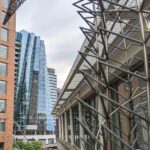
by Sam Minton | Sep 22, 2024
If the state’s housing supply doesn’t also get a significant boost, some worry that a pulse of new aspiring homebuyers might only send demand – and thus prices – higher and higher.

by Banker & Tradesman | Jun 23, 2024
It’s been my view that limited inventory has been masking weak underlying demand. Even in communities where inventory is still constrained, the near-term inventory trends are sharply higher.

by Jay Fitzgerald | Aug 20, 2023
Owners of luxury homes in Boston can take solace in this fact: At least they’re not in San Francisco, even as new data shows the region’s high-end housing market is moving noticeably slower than the rest of the sector.

by Banker & Tradesman | Jun 25, 2023
Firm pricing can’t be explained away by supply and demand dynamics. Rising inventory and declining sales suggest weaker prices. So, what’s going on? I suspect that the answer lies in marketing myths.

by James Sanna | May 2, 2023
First Republic Bank was the dominant force financing Boston’s luxury real estate scene in the last 10 years, and its sudden failure is leaving questions lingering in the air.

by Steve Adams | Feb 12, 2023
Developers of luxury condominium towers in Back Bay, downtown Boston and the Seaport District are delivering nearly 600 units to a market that saw a 13 percent drop in sales volume last year.
by Banker & Tradesman | Dec 4, 2022
Thanks to a spike in interest rates, a popular pandemic sales mantra has been replaced with something potentially more toxic, which could leave buyers up the creek if the economy worsens next year.

by Banker & Tradesman | Jun 26, 2022
This year got off to a strong start and we even had a scattering of suburban-esque bidding wars, but it hasn’t been all fun and games for every developer. However, a significant decline in transaction volume in luxury neighborhoods is cause for concern.

by Banker & Tradesman | Feb 20, 2022
Downtown Boston luxury real estate was more tempered when compared to suburban activity, but it decisively beat naysayers’ predictions. Here’s how to understand what happened.












